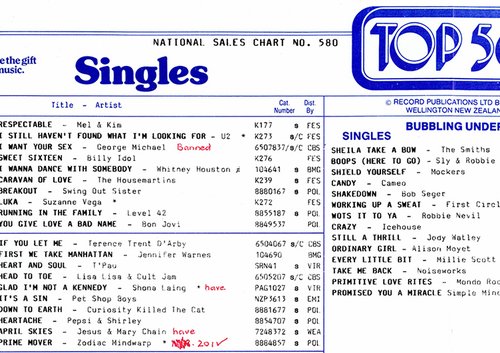
By Gareth Watkins
Ngā Taonga Sound & Vision has recently acquired from RNZ popular music charts dating from 1956 – 1998. Sales and popularity data have long been used to create various music chart programmes, with the first “Hit Parade” broadcasting in 1946.
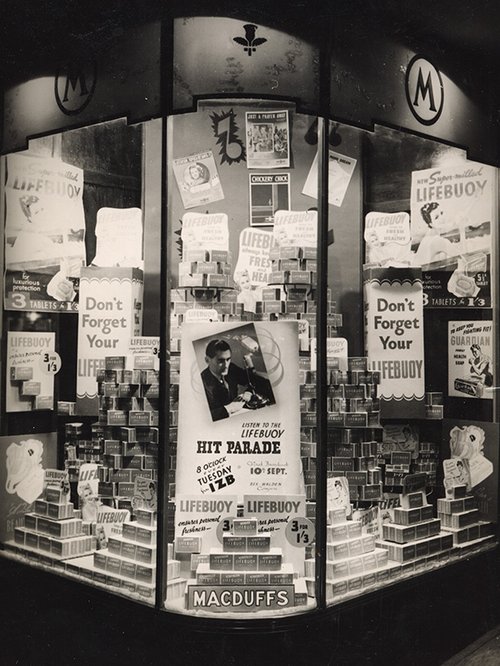
An advert in a shop window for the Lifebuoy Hit Parade, 1946.
Ngā Taonga Sound & Vision collection.
The “Lifebuoy Hit Parade” began broadcasting nationally in 1946 on ZB stations each week. Records were selected from the USA and UK music charts, plus recent music releases.
Listen to an unidentified announcer advertising Lifebuoy soap during the “Lifebuoy Hit Parade,” 1947:
The chart information in this recent accession from RNZ starts at the [Lever] Hit Parade No.533, for 27 December 1956. As noted on AudioCulture ’s website, charts up until 1960 favoured overseas artists and rarely featured hits by local acts because the charts were based on perceived popularity, not sales.
Donald McCree introduces the 1952 “N.Z. Hit Parade”
On 11 March 1966 the N.Z. Listener published an article outlining a new approach by the New Zealand Broadcasting Corporation:
“Starting next week the NZBC is to present something new in the way of ‘Hit Parade’ programmes. With the co-operation of radio listeners, it is hoped that for the first time in this country a really authentic ‘Hit Parade’ on a national scale can be put on the air regularly.”
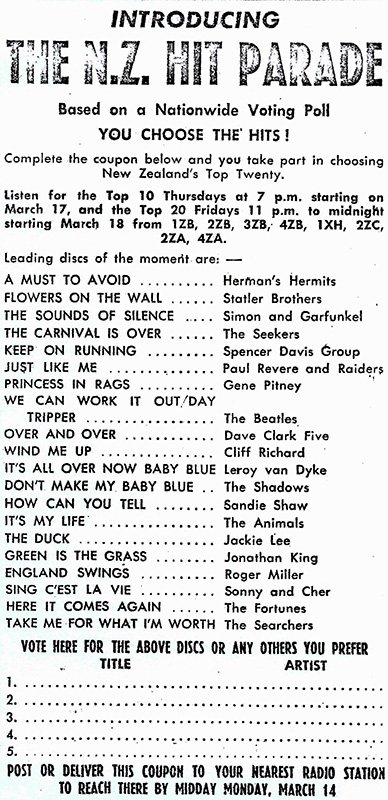
Advertisement in the “N.Z Listener” (11 March 1966) for the first N.Z. Hit Parade based on a nationwide voting poll (Ngā Taonga Sound & Vision collection).
In those pre-digital days voting was a very manual affair:
“Each week a voting coupon will appear in the N.Z. Listener. Readers are asked to fill this in, listing in order of preference their five favourite records of the moment. […] The coupons must reach local radio stations by midday on the Monday preceding the broadcast of each week’s programme. […] At the stations, the titles appearing on the coupons will be counted, and the information sent by teleprinter to NZBC Head Office in Wellington. With these figures as a basis, compere Peter Sinclair and producer John Douglas will start planning their Hit Parade programmes.”
The new format “N.Z. Hit Parade” debuted nationally on 17 March 1966, airing on the ZB and ZA stations and on 1XH and 2ZC. There were two shows per week – on Thursdays at 7pm (Top Ten) and on Fridays at 11pm (Top 20).
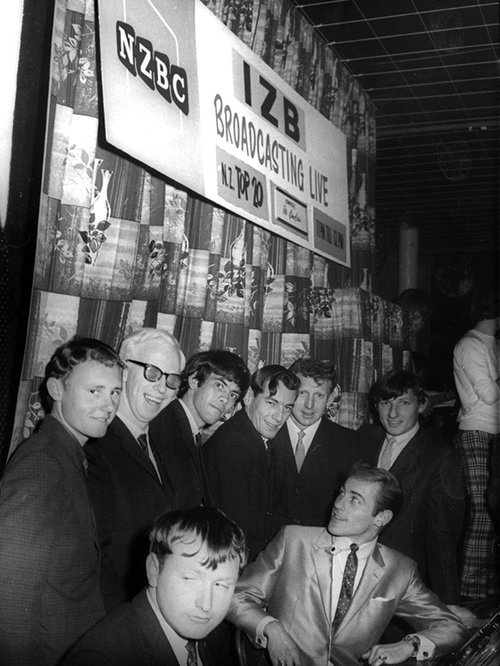
Host of the “N.Z. Hit Parade,” Peter Sinclair (in the shiny suit) with the band The Gremlins, c. 1966 (Ngā Taonga Sound & Vision collection).
Peter Sinclair hosts his final “Hit Parade” (broadcast from Surfers Paradise, Australia):
It wasn’t until 1975 that a ratified weekly sales chart began of Top 40 singles and albums, expanding to a Top 50 in May 1979.
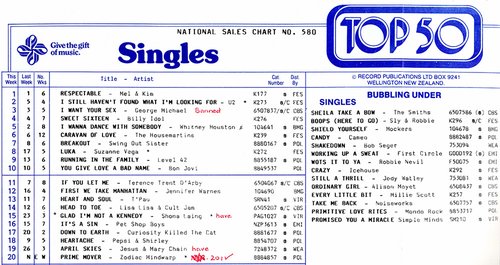
An example of part of a National Sales Chart, 9 August 1987 (Ngā Taonga Sound & Vision collection).
One of the interesting aspects of the charts supplied by RNZ is that there are annotations (ticks and short notes) alongside various singles. These give a glimpse into music purchasing / programming for BCNZ stations.
To read a fuller history of music charts in New Zealand visit Audioculture’s “New Zealand Charts – The Genesis.”
Audio from Ngā Taonga Sound & Vision Radio Collection, all rights reserved. To enquire about re-use of these items please contact sound@ngataonga.org.nz